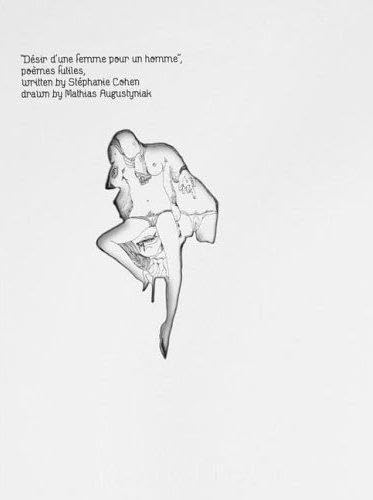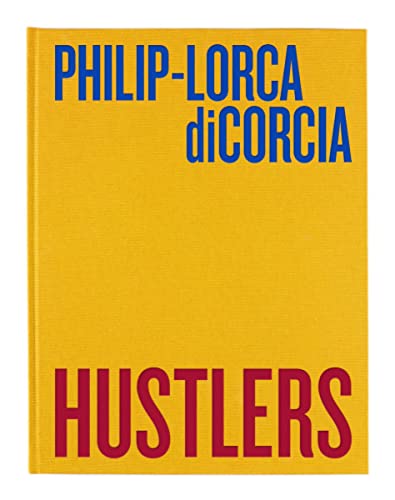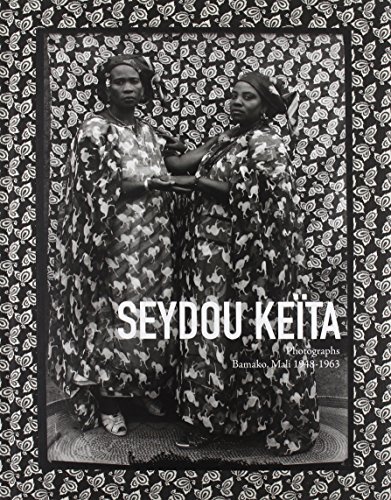steidl eb (4 risultati)
Tipo di articolo
- Tutti gli articoli
- Libri (4)
- Riviste e Giornali
- Fumetti
- Spartiti
- Arte, Stampe e Poster
- Fotografie
- Mappe
-
Manoscritti e
Collezionismo cartaceo
Condizioni
Legatura
- Tutte
- Rilegato
- Brossura
Ulteriori caratteristiche
- Prima edizione
- Copia autografata
- Sovraccoperta
- Con foto
- No print on demand
Paese del venditore
Valutazione venditore
-
Félix González-Torres
Editore: Steidl, EB, 2016
ISBN 10: 3869309210ISBN 13: 9783869309217
Da: Last Exit Books, Charlottesville, VA, U.S.A.
Libro
Hardcover. Condizione: New. Hardcover. 4to. Steidldangin, Gottingen, Germany. 2006. 400 pgs. Text in English. Brand new. No ownership marks present. Text is clean and free of marks, binding tight and solid, boards clean with no wear present. Félix González-Torres, one of the most influential artists of his generation, lived and worked resolutely according to his own democratic ideology, determined to "make this a better place for everyone." Combining principles of Conceptual Art, minimalism and political activism, González-Torres' arsenal included public billboards, giveaway piles of candy or posters and ordinary objects (clocks, mirrors, light fixtures) often used to startling effect. His work challenged notions of public and private space, originality, authorship and the authoritative structure in which he functioned. With this volume, now in its second edition, Gonzalez-Torres's editor Julie Ault has amassed a comprehensive overview of this important artist. In the spirit of the artist's method, Ault rethinks the very idea of what a monograph should be. The book contains texts by Robert Storr and Miwon Kwon, among other notables, as well as significant critical essays, exhibition statements, transcripts from lectures, personal correspondence and writings that influenced González-Torres and his work. Ample visual documentation adds another decisive layer of content. We see works not just in their finality, but often witness their transformation over a lifespan. EB; 10.8 X 8.6 X 1.4 inches; 400 pages.
-
Désir D'Une Femme Pour Un Homme, Poèmes Futiles Poems by Stéphanie Cohen & Drawings by Mathias Augustyniak
Editore: Steidl/Dangin, EB, 2006
ISBN 10: 3865211607ISBN 13: 9783865211606
Da: Last Exit Books, Charlottesville, VA, U.S.A.
Libro
Hardcover. Condizione: Very Good. Hardcover. 4to. Steidl/Dangin, Gottingen, Germany. 2006. 25 un-numbered pages with ills. , printed recto only, interleaved with an equal number of glassine leaves imprinted with the poetry. #71 of a limited edition of 700 copies. Brand new and still sealed in the original publisher's box. "Désir d'une femme pour un homme", poèmes futiles can be read as an intimate conversation between a man and a woman in words and images. It is also a collection of poems and drawings that began, strangely enough, with a fashion story. In the hands of Mathias Augustyniak, one half of the design duo M/M Paris, drawing is a powerful and introspective tool, a link between hidden worlds. As a Creative Director, Augustyniak often employs drawing to bring out the hidden message in photography. In the case of "Libertine," a subliminally erotic fashion story by Inez van Lamsweerde and Vinoodh Matadin, Augustyniak's subconscious caught up with him, ultimately leading him on a 13-day journey of the mind and the soul. The sexually explicit yet playfully childlike drawings gathered here track the path of that journey--a very personal, though not solitary or self-centered experience. Augustyniak in turn passed the drawings on to the French novelist Stéphanie Cohen and commissioned the set of accompanying poems. Published in both French and English, the spare, enigmatic, and highly charged verse stands as a body of work all its own. In other words, the drawings don't necessarily illustrate the poems, just as the poems don't necessarily clarify the drawings. The two are in conversation and sometimes even contradiction. EB; 15.0 X 11.2 X 0.6 inches; 52 pages.
-
Philip-Lorca Dicorcia Hustlers
Editore: Steidl, EB, 2013
ISBN 10: 3869306173ISBN 13: 9783869306179
Da: Last Exit Books, Charlottesville, VA, U.S.A.
Libro
Hardcover. Condizione: Very Good. Hardcover. 4to. Published by Steidl, Gottingen, Germany. 2013. 160 pgs. Signed by Philip-Lorca diCorcia on the title page. First Edition/First Printing. Publisher's acetate DJ has light shelf-wear present to the DJ extremities. Bound in tall orange cloth with titles in blue & orange to the spine and front board. Boards have light shelf-wear present to the extremities. No ownership marks present. Text is clean and free of marks. Binding tight and solid. Between 1990 and 1992, Philip-Lorca diCorcia, funded by a National Endowment for the Arts fellowship, made multiple trips to Los Angeles to scout locations, invent scenarios, and ultimately find male prostitutes that would agree to pose for his camera. What he found and devised is represented in this monumental folio. EB; 17.6 X 13.1 X 1.0 inches; 160 pages.
-
Seydou Keita Photographs, Bamako, Mali 1948-1963
Editore: Steidl, EB, 2011
ISBN 10: 3869303018ISBN 13: 9783869303017
Da: Last Exit Books, Charlottesville, VA, U.S.A.
Libro
Hardcover. Condizione: New. Hardcover. 4to. Steidlangin, Gottingen, Germany. 2011. 412 pgs. Illustrated throughout. Brand new in the original publisher's shrinkwrap and still in the original shipping box. DJ has light shelf-wear present to the DJ extremities. No ownership marks present. Text is clean and free of marks, binding tight and solid. African portraitist Seydou Keïta lived in Bamako, Mali, then part of the colony of French Sudan and a bustling transportation hub on the route to Dakar, from 1921 to 2001. A self-taught photographer, with a Kodak Brownie given to him by his uncle, Keita took up photography at the age of fourteen, he opened a studio in 1948 and specialized in portraiture. Seydou Keïta s photographs eloquently portray Bamako society during its era of transition from a cosmopolitan French colony to an independent capital. Whether photographing single individuals, families, or professional associations, Keïta balanced a strict sense of formality with a remarkable level of intimacy with his subjects. Like many professional photographers, he furnished his studio with numerous props, from backdrops and costumes, to Vespas and luxury cars. He would renew these props every few years, which later allowed him to establish a chronology for his work He worked intuitively, reinventing portrait photography through his search for extreme precision. In 1962 the newly installed Socialist government made Keïta its official photographer; shortly thereafter he closed down his studio, although he remained active until his retirement in 1977. His archive of over 10,000 negatives was gradually brought to light in the early 1990s; Keïta has since achieved international recognition. Inventive and highly modern, his emphasis on the essential components of portrait photography light, subject, framing firmly establishes Keïta among the twentieth-century masters of the genre. EB; 15.3 X 11.7 X 2.2 inches; 412 pages.





